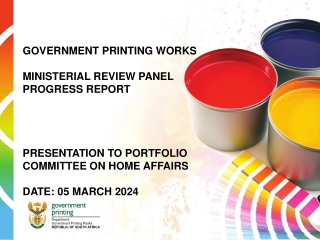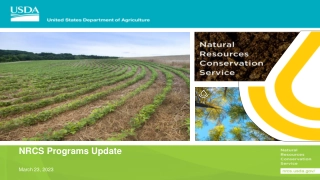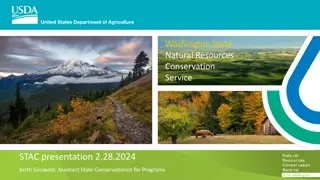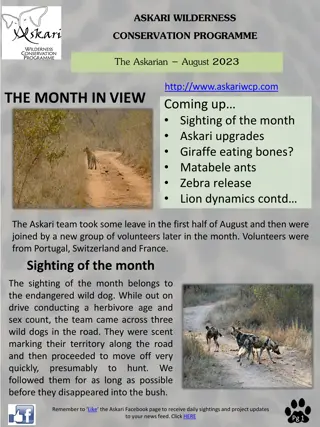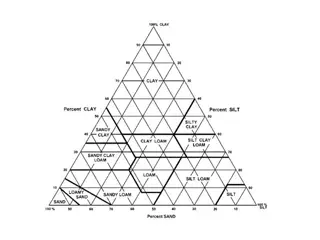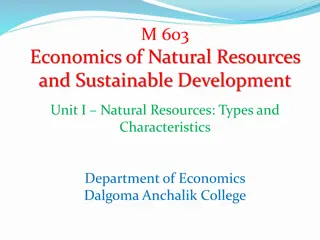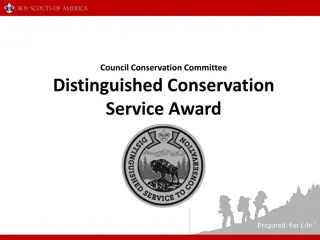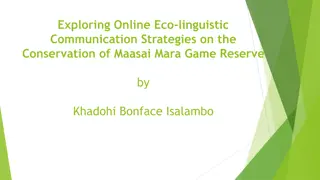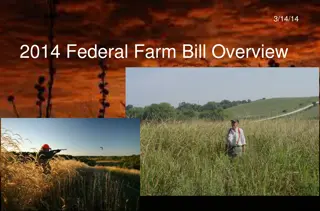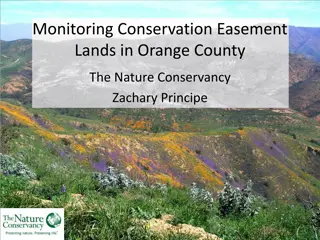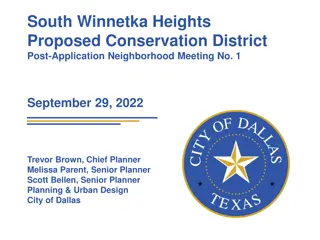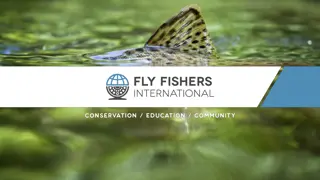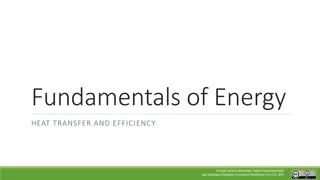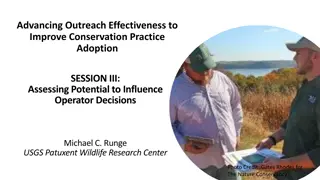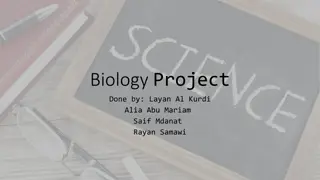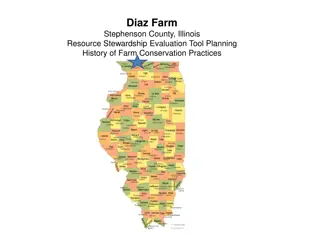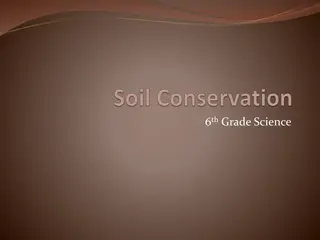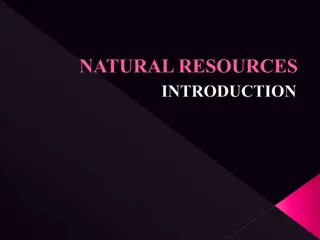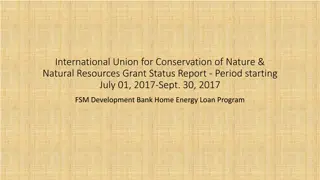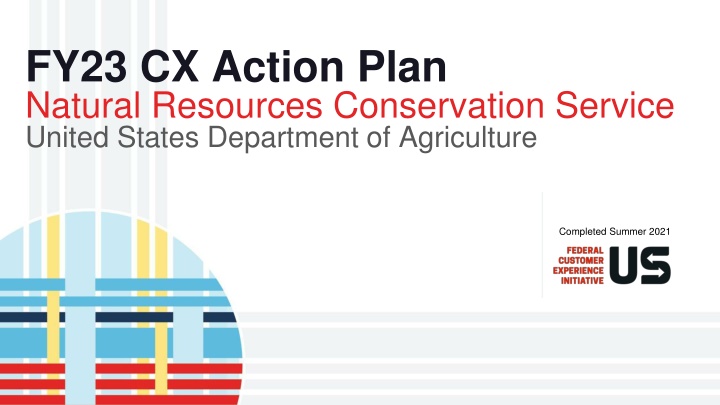
Natural Resources Conservation Service Progress Report
The FY23 CX Action Plan by the United States Department of Agriculture focuses on developing innovative tools, optimizing customer service, and addressing barriers for underserved producers. Key accomplishments include the development of Career Planner tools, HEL and Wetland Determination Tools, and adaptation strategies during a global pandemic. The report outlines achievements, areas for improvement, and reflections on equity and inclusion.
Uploaded on | 1 Views
Download Presentation

Please find below an Image/Link to download the presentation.
The content on the website is provided AS IS for your information and personal use only. It may not be sold, licensed, or shared on other websites without obtaining consent from the author. If you encounter any issues during the download, it is possible that the publisher has removed the file from their server.
You are allowed to download the files provided on this website for personal or commercial use, subject to the condition that they are used lawfully. All files are the property of their respective owners.
The content on the website is provided AS IS for your information and personal use only. It may not be sold, licensed, or shared on other websites without obtaining consent from the author.
E N D
Presentation Transcript
FY23 CX Action Plan Natural Resources Conservation Service United States Department of Agriculture Completed Summer 2021
FY21 Capacity Assessment Reflection Summary What we re proud of this year: Competencies and Training for Job Series Career Planner developed for three job series (457, 458, 470) with additional series under development. The series are field based/support positions that will ensure mission delivery. This assessment will allow for us to better train the workforce to provide enhanced and optimized customer service including prescriptive technical recommendations. Career Planner is a Microsoft Excel tool that assists staff and supervisors in evaluating proficiency levels and identifying gaps in the assigned competencies. Developing communications toolkit. HEL and Wetland Determination Tool The HEL tool resulted in product consistency and saved an estimated 2.5 hours per determination and an estimated 53 staff years annually. It improves customer service by improving response time and quality for customers. This tool was developed in a collaboration with FSA. Development of Offsite Wetland Determination Tool and is currently in testing phase. National Innovation Leader National Innovation Leader hired to address project management, service design, adoption of new projects and expansion of innovation within the agency. As a result of this effort, we will provide new tools and expand technology to increase ease and efficiency for our customers. 2 Where we need to do better: Engage and inspire employees to recognize, understand, and address barriers and opportunities for improvement. Innovation generates from field staff who encounter the issues and barriers out in the field, day in and day out. We want to harness that innovation. Create an online portal where employees can submit, interact, and see the results of innovative ideas and solutions.
Adapting Service During a Global Pandemic Where we innovated Modified the Service Delivery Model E-signatures Our farmers.gov, which features e-signature, customer facing updates on forms, is allowing us to have more interaction with customers on a 24/7 basis so our assistance can be provided when a producer needs it, not just limited when we are in the office. Use of digital platforms to reach customers The efficiencies gained have been adopted into the service delivery model and will be available going forward. 3
HISP Equity Reflection Who is this provider intended to serve? American farmers, ranchers, forest landowners, local communities and American public. Are there barriers that people of color, people with disabilities, LGBTQ+ people, women, non-native English speakers, and others who have been historically underserved, marginalized, discriminated, and adversely affected by persistent poverty and inequality face with regard to this program or service? Stigma in self-identifying as underserved producer Need for in-person interaction for underserved producers Discomfort or lack of trust with government agencies Program complexity overwhelming Payment schedules and format does not match the small producer needs Timelines do not meet financial assistance needs for producers Reluctance to use advance payments, as well as stigma with advance payments Inadequate funding and or program assistance slated for urban agriculture producers Assess office hours and use of farmers.gov with this group so customers can consistently access services When demoing farmers.gov with urban and limited growers, we will need to identify what they find helpful Increased understanding for urban agriculture technology/innovation How might these individuals interact with your program differently? In-person interaction to establish trust Customized/tailored information or forms to match their needs Translation Services may be needed Need trusted sources/intermediaries we will assess how partners are utilized and will adjust as needed to provide key service and support Past events/interactions may influence future engagement/participation Hours of operation may not be conducive to some, more devotion needed to off core hour dialogue Lack of information on how USDA works Where do we have a knowledge gap about individuals interactions with our service we need evidence to fill? Less quantitative data for limited resource producers' interactions Need information about overlap between limited resources groups and other producer groups (need to distinguish which group the limited resource producers are engaging, beginning farmer, historically underserved) No good metric to measure limited resource producers who we have served and or what is needed While contracts will provide a data point, it will not fully serve as a metric to capture our service provided to HU customers. Plain language avoid acronyms 4
FY22 Action Update: Employee Innovation Portal What customer need will this action address? Process Ease/Efficiency Why is this a priority? Innovation generates from field staff who encounter the issues and barriers out in the field, day in and day out. We want to harness that innovation. This effort will improve the customer experience through sharing of field developed resources such as outreach tools and products and technical tools that improve speed and accuracy for technical recommendations made to customers. Who is responsible for this action happening? NRCS Chief and Agency Senior Leaders What action(s) / deliverables / milestones will you take / hit between Oct. 1, 21 Sept. 30, 22? ENGAGE and inspire employees to recognize, understand, and address barriers and opportunities for improvement. Create an online portal where employees can submit, interact, and see the results of innovative ideas and solutions. Develop, pilot test and launch national Employee Innovation Portal Test farmers.gov; have it be demoed and discussed with urban producers How will you measure whether these actions had their intended effect? Conduct bi-monthly Employee Innovation Portal submission reviews 5 What do you need to make this happen? Continued Agency commitment and support Customer Service Survey for increased engagement
FY22 Action Update: Enhancement of Conservation Assessment Ranking Tool What customer need will this action address? Process/Ease and Efficiency Why is this a priority? The tool has streamlined and modernize NRCS conservation planning and program delivery by reducing field staff workload and improving the customer experience by creating and efficient conservation planning and application evaluation process. 92,397 assessments have been completed to date 72,343,225 million acres have been assessed to date which is 216% of the average acres planned per FY 112,540 rankings have been completed to date (one assessment can be ranked for multiple applicable ranking pools) Who is responsible for this action happening? NRCS Chief and Agency Senior Leaders What action(s) / deliverables / milestones will you take / hit between Oct. 1, 21 Sept. 30, 22? A decrease in time from program application to contractual funding. A decrease in the number of applications per producer. An increase in real-time resource assessments through a decision support system (CART). 6 How will you measure whether these actions had their intended effect? Reduce repetitive requests for information where streamlining of current program policy is completed to increase workload efficiencies. Improve the internal processes for programmatic decisions to increase program efficiency and quality assurance with the certainty our customers deserve and expect. What do you need to make this happen? Continued Agency commitment and support
FY23 Commit to Action: Conservation Planning Process Reinvigorate Conservation Planning What customer need will this action address? Service - Effectiveness Why is this a priority? Conservation planning is the foundation for voluntary conservation delivery. A comprehensive conservation plan will provide a prescriptive approach for identifying long term solutions that will aid American farmers, ranchers, foresters with the treatment and addressing resource concerns needed to achieve the benefits of a healthy and productive landscape. Who is responsible for this action happening? NRCS Chief and Agency Senior Leaders What action(s) / deliverables / milestones will you take / hit between Oct. 1, 22 Sept. 30, 23? April 30, 2021 Preliminary State plans will be submitted June 1, 2021 - Preliminary plans and/or reports will be reviewed by a core team and general feedback will be provided to all state teams for their use in finalizing state plans. Virtual training for state and conservation partner leaders; June 22nd and June 24th July 16, 2021 Final plans should be submitted 7 How will you measure whether these actions had their intended effect? Conduct quarterly reviews for the state plans. What do you need to make this happen? Continued Agency commitment and support
FY23 Commit to Action: Urban Agriculture What customer need will this action address? Service - Effectiveness Why is this a priority? Urban agriculture serves as a vital component in food security and conservation. The ability to address 80% of the U.S. population living in or near urban centers, urban agriculture will make a significant impact on the health and well being of our customers. Who is responsible for this action happening? NRCS Chief and Agency Senior Leaders What action(s) / deliverables / milestones will you take / hit between Oct. 1, 22 Sept. 30, 23? Establishment of the Office of Urban Agriculture Announcement for Urban Agriculture and Innovation Production Grants Review of payment system scenarios for Urban agriculture and small farms Cross cut with Conservation Planning Process Item #1 by adding urban modifier and land use to CART resources assessment and creating urban ranking pools Pilot soil testing for contaminants How will you measure whether these actions had their intended effect? Increase program participation including pilot participants Adoption of new conservation practice implementation Expansion of voluntary agriculture for Beginning Farmers, Ranchers, Foresters; Historically Underserved, Limited Resource and nontraditional customers Website and farmers.gov analytics/reports for user access 8 What do you need to make this happen? Continued Agency commitment, resources and support

